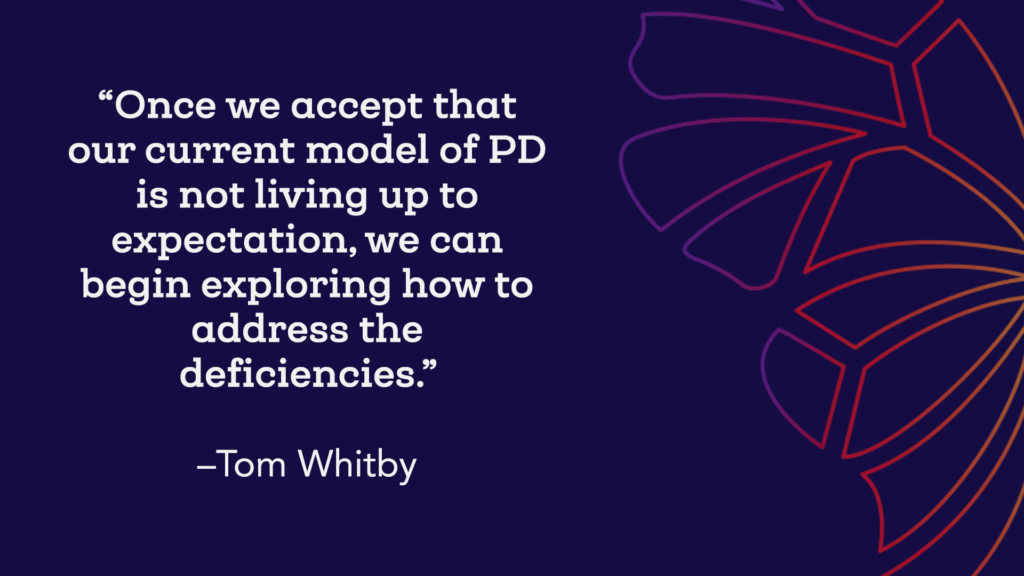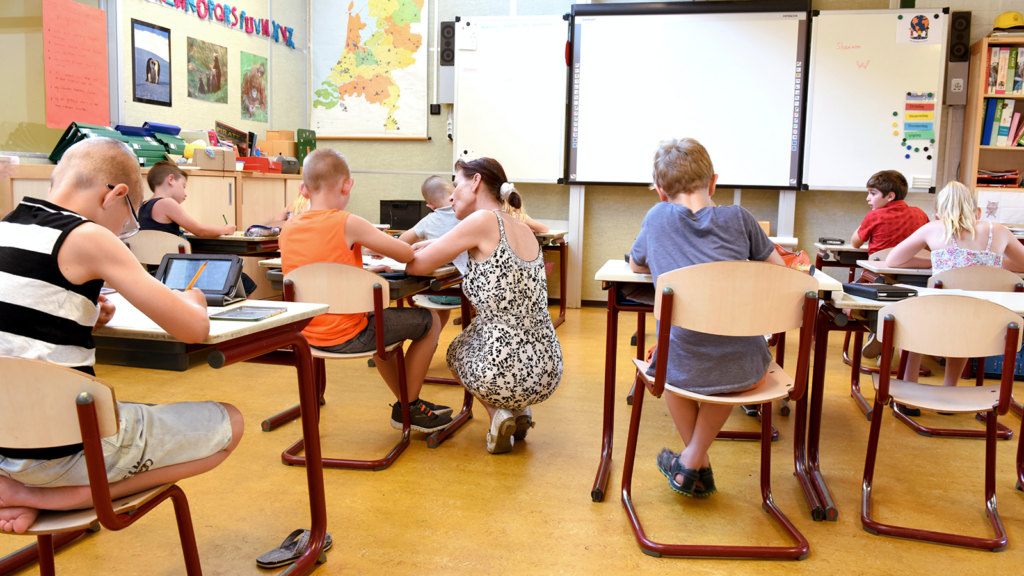The pandemic taught us a great deal about the need for effective professional development beyond what we have provided in the past. For at least a decade, the focus of much PD for educators involved technology integration. Hours of seat time were devoted to how to teach through distance learning. Schools shifted their focus to providing Internet access in every class. The big test came when the pandemic hit, schools shut down, and we were all told not to worry, because teachers were prepared for distance learning. In fact, it was a disaster. Many admitted they were never taught how to teach this way, because they were never comfortable with that learning from their professional development. PD can’t work unless it is applied consistently. It can’t be stored up and used when needed in a year, a month, or even in a week. Andragogy (adult learning) teaches us that adults want to learn things today so that they can use them tomorrow.
For decades, I have been emphatic about one thing I believe is key to the success of our education system: effective professional development. If we want to better educate our students, we need first to better educate their educators. When a prospective teacher graduates from college with a degree and then secures a job, the only way to stay relevant in their profession is through professional development.
Trying to get the greatest number of teachers immersed in new approaches to learning in the shortest period of time seems to be the guiding goal of education PD. However, providing large-scale PD has always been a logistical nightmare. Getting a specific amount of seat time for any lecture on a specific topic sounds like an easy box to check off, yet too often it comes at the expense of effectively coordinating groups of teachers, finding an acceptable common time, employing a consultant or educator to provide content, and securing adequate and appropriate technology and materials.

For years, teachers have been overwhelmingly unsatisfied with a majority of their required professional development (71%, according to a recent report from the Gates Foundation) because of ongoing institutional failure to surmount these obstacles:
- A one-size-fits-all approach to PD
- A lack of follow-up programs
- Insufficient time to learn
- Insufficient instruction for adapting new learning into their teaching practice
- Not knowing if their changes based on the new PD will actually work
- Not getting time for collaboration and feedback
All of this makes PD less effective to implement. An unwanted outcome is most teachers learning that, if something new is ignored long enough, it will soon be forgotten and replaced with something else. Very little about this model of PD makes people comfortable with change, and comfort with the status quo offers little opportunity for education to evolve.
How to Move Forward
If we are to learn a lesson from the pandemic in regard to education, it is not to run in circles screaming, “ALL IS LOST, ALL IS LOST!” Spending time in a seat listening to a lecture about hypothetical classrooms didn’t work before the pandemic and will not work after it. Once we accept that our current model of PD is not living up to expectation, we can begin exploring how to address the deficiencies identified above. We can also incorporate the ever-evolving technology at our disposal to address many of the problems that were unsolvable for the past two centuries. These five suggestions can help us move forward with professional development for our educators:
- PD works best when it can be done one-on-one. This involves not only a willing educator, but also a supportive administrator or coach who values educating students above and beyond any other objective or agenda.
- PD requires the instructor’s knowledge of andragogy (adult learning) over pedagogy (child learning). Adults must be respected for what they bring to the table and are capable of collaboration to achieve a goal, given the time, tools, and support. After all, these are educators with classroom experience and a passion for teaching. These are resources to be drawn upon rather than ignored.

- Video can save time. By recording at least one actual lesson chosen by the teacher, we can use that as a baseline for addressing that teacher’s methods and skills. Once that baseline is established, we can be more specific about which tools and methods the teacher might adopt to become more effective and efficient. It is like creating an individualized education program (IEP) for each teacher.
- Instructional coaches belong in every school. (Many districts in our country are already moving in this direction.) These individuals must be able to:
- Analyze teachers’ baseline lessons
- Critique each teacher
- Establish a plan to improve methodology
- Introduce and train each teacher on new technology as their individual subject areas require
- Work collaboratively through conversation rather than lecture
Not only would such a coaching staff individually upgrade every teacher in each building, it would help create and nurture a collaborative culture for each school’s entire learning community.
- Hire or promote administrators who understand and support effective PD. A truly effective administrator will do whatever it takes to facilitate the school’s instructional coaching program. It is possible (or my hope) that we may even begin to see administrators with a background of coaching experience
It is certainly obvious that our current model of professional development is failing and must be improved, and it is just as likely that the response will be: “We don’t have the money for this!” Yet to ignore our need is to continue on the same path of diminishing returns. Professional development must be a priority. There are no shortcuts or cheaper versions. We are experiencing a teacher shortage nationwide, making this the most critical time to be investing in teachers. If we don’t seize this opportunity, they will continue to leave the profession–which will eventually lead to even greater expenses for districts. Either education becomes a priority, or we will all wind up running in circles screaming “ALL IS LOST, ALL IS LOST!” If we are to better educate our students, we need first to better educate their educators.
Recommended Reads:






